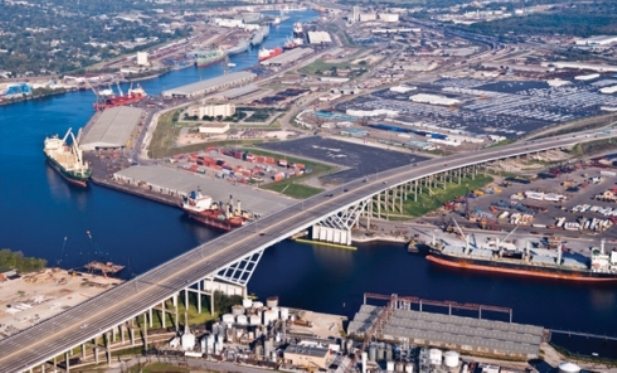
HOUSTON—The Houston economy is resilient. Recent market statistics and activity indicate that Houston's entrepreneurial spirit is alive and that the recovery is underway. Now the question is how long until equilibrium is reached.
In the wake of an energy industry downturn that caused oil prices to plummet and rocked energy-exposed office and industrial markets across North America, most of those markets began to recover in 2017, according to CBRE's 2017 North American energy trends report. Oil producers are adapting to the new landscape by restructuring to focus on onshore operations, increasing rig and operator efficiency, and exploring alternative energy sources.
“Improving crude oil prices since early 2016, now slightly above $60 a barrel for West Texas Intermediate crude, could prove to be an industry tipping point for increased operations and profit margins. The long and seemingly unending hike back to this price level was broken as December drew to a close, and this is encouraging news for Houston. Labor indexes continue to rise overall for the energy industry with employment activity concentrated in the services segment. As a result, the largest rehiring effects are service related as demand for drilling activity expands,” said Robert Kramp, CBRE director of research and analysis.
Recent energy industry contraction was exacerbated by several factors, such as a construction cycle that added more than 31 million square feet of new space, the relocation of major energy occupiers from large blocks of lease space to owner-occupied campus developments, and aggressive leasing strategies that weren't sustainable in the long term. These factors eventually led to office sublease availabilities exceeding 12 million square feet. Looking ahead, sublease availability will continue to be a drag on net absorption and occupancy levels, as almost 3 million square feet of sublease is expected to return to the market as a direct vacancy through 2019, GlobeSt.com learns.
The Houston economy has avoided overall job losses and may end up adding more than 60,000 jobs this year as other industries have filled in the gaps. But, significant damage has been done in terms of the quality of jobs added to the economy during the recovery period, the report indicates. Houston's share of base jobs, employment that brings new income from outside the area, has shrunk in recent years. Manufacturing and demographically driven growth have been the strength behind recent job gains.
When it comes to capital markets with a high concentration of energy office and industrial occupiers, investor perceptions sometimes carry over to other property sectors. In Houston, capital availability across product types significantly tightened from 2015 to 2016 and only recently showed signs of recovery. While investors' perceptions of office building investment were negative, they remained bullish on other sectors, such as retail and industrial properties.
Perhaps the most significant trend to emerge from the recent downturn is the permanent restructuring of the energy industry's oil sector. The report finds producers are shifting away from capital-intensive offshore production in favor of short-term high-return onshore operations, i.e. fracking, says CBRE.
Another trend identified in the report as contributing to the energy industry's recovery is the decline of production costs due in large part to a rise in rig efficiency. Since the price shock in 2014, production per rig in some of the major US shale regions has nearly tripled. A rise in production efficiency has allowed energy companies to continue to operate—and in some cases still turn a profit—despite the dramatic drop in price per barrel of oil. This in turn has helped firms preserve jobs and maintain a presence in certain markets.
While efficiency has risen, experts do not expect oil prices to return to pre-crash levels. One reason is declining global demand for crude oil. Experts estimate that oil demand will peak as early as the late 2020s through 2040. Major oil producers have responded by diversifying product offerings to include petrochemicals, natural gas and renewable technology.
Natural gas now accounts for most US domestic energy production and proven reserves, making the US the world's top producer of natural gas. Given the rapid expansion in economically viable gas reserves, investment in liquefied natural gas export terminals has accelerated in recent years. Four existing Gulf Coast liquefied natural gas export terminals have a total capacity of 6.79 billion cubic feet per day and seven more terminals with total capacity of 9.65 billion cubic feet per day are under construction. This increased capacity puts the US on track to become the world's third largest liquefied natural gas exporter by 2020, GlobeSt.com learns.
With regard to the nuts and bolts of the fourth quarter local industrial market, CBRE points to robust organic demand driven by expansions and move-ins. The net occupier demand in fourth quarter totaled more than 1 million square feet, pushing year-end net absorption to 7 million-plus square feet, GlobeSt.com learns.
Overall availability tightened by more than 60 basis points. Direct vacant space decreased 800,000 square feet and total availability decreased by 3 million square feet, quarter-over-quarter.
In addition, the development pipeline grows as more spec projects break ground. The Port and West Houston logistics demand are driving construction, as 3.3 million square feet of new projects get underway.
This record-setting year for Port Houston volume and the emergence of the Gulf Coast as a low-cost global petrochemical manufacturer leaves Houston's industrial sector well positioned entering 2018.
© 2025 ALM Global, LLC, All Rights Reserved. Request academic re-use from www.copyright.com. All other uses, submit a request to [email protected]. For more information visit Asset & Logo Licensing.





